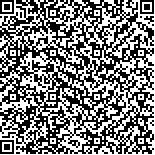| Quote
: |
孙文君,杨振宁.中医象数思维特点与表征模式[J].湖南中医药大学学报英文版,2012,32(7):6-8.[Click to copy
] |
|
| |
|
|
| This paper
:Browser 3397times Download 25times |
| 中医象数思维特点与表征模式 |
| 孙文君,杨振宁 |
| (山东中医药大学) |
| 摘要: |
| 象数是《周易》特有的一种概念,在中医理论中渗透很深。通过分别对“象”的形象性、概括性、融通性特点,
及“数”的代表性、系统性、规律性特点的分析,进一步得出,以实为本,以象为喻,实象结合;以象为体,以数为用,象数
结合的表征模式。这种象数思维的结合,对于深刻理解中医理论,认识疾病传变规律,正确辨证论治有重要的意义。 |
| 关键词: 中医 象 数 表征模式 |
| DOI: |
| |
| 基金项目:无 |
|
| Characters and expressive patterns of Xiangshu thinking in-Traditional Chinese Medicine |
| SUN Wen-jun, YANG Zhen-ning |
| (Shandong University of Traditional Chinese Medicine) |
| Abstract: |
| Xiangshu, which is a unique concept of “Zhouyi”, penetrates deeply into the theory
of Traditional Chinese Medicine. The author explored Xiangshu expressive patterns and its significances
in TCM through analyzing Xiang’s features of figurativeness, generality, flexibility, and
Shu’s features of variability, systematicness, regularity. Furthermore, the Xiangshu expressive patterns
were generalized as the integration of objects and their Xiang (Xiang is a metaphor based on
the object) and the integration of Xiang and Shu (Xiang is the presentation of being and Shu is for
functions). The Xiang and Shu integration is significant for better understanding about TCM theory,
disease progressive patterns and proper syndrome differentiation and treatments. |
| Key words: Traditional Chinese Medicine Xiang Shu expressive patterns |
|

二维码(扫一下试试看!) |
|


